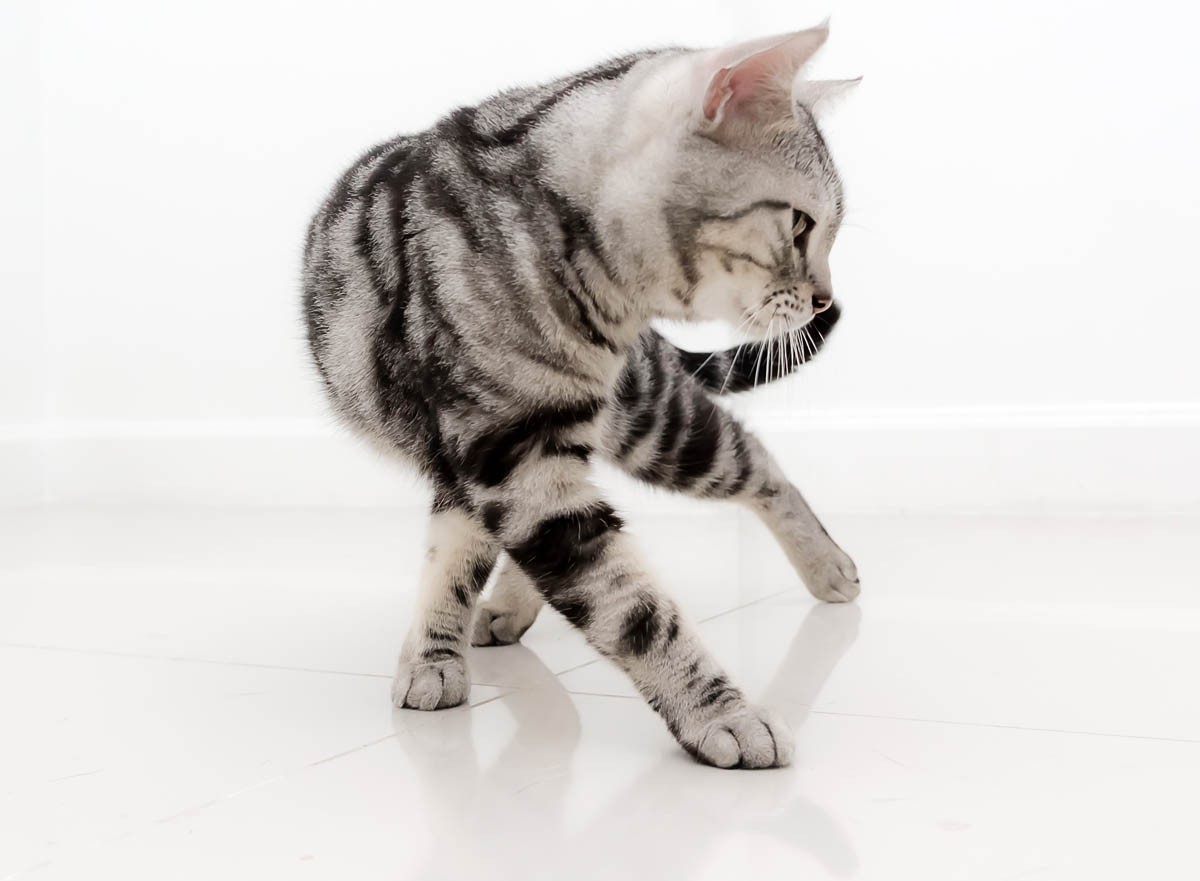At a glance
- What is a tabby cat? Tabby is a coat pattern and not a breed, it consists of four patterns, mackerel, spotted, classic and ticked. The background hair consists of light and dark bands, intermingled with dark lines, spots or swirls layered on top.
- What colour is a tabby cat? Tabby occurs in several colours, the most common are brown tabby, silver (grey) and orange tabby
About
Tabby refers to a coat pattern in cats that consists of dark swirls, stripes, spots superimposed on a lighter background of ticked (banded fur).
The banded background (ground colour) consists of hairs that are more than one colour along the hair shaft and is termed agouti. This is caused by the transient inhibition of pigment production during, the hair’s growth.

The agouti gene controls whether the tabby markings are expressed or not. The dominant agouti allele, with the symbol A, will express the tabby pattern. The recessive a hides the tabby pattern, to produce a solid (self) coat colour from the root of the hair to the tip. A cat must receive two copies of the recessive ‘a’ gene (aa) to have a solid coat.
Three possible outcomes dictate if the coat will be tabby or not, remembering that the cat receives a copy of each gene from the mother and the father.
- A/A (homozygous dominant) – Tabby
- A/a (heterozygous dominant) – Tabby (the dominant A will override the recessive a)
- a/a (heterozygous recessive) – Non-tabby (solid)
Tabby patterns are common in random-bred cats as well as many pure breeds. All domestic cats were once tabby, mutations lead to some cats appearing solid, bi-colour or pointed. Even cats with no tabby stripes have tabby genes but do not show the pattern on the fur. Some young cats with solid coat colours will display faint ghost tabby markings until their fur becomes fully pigmented.
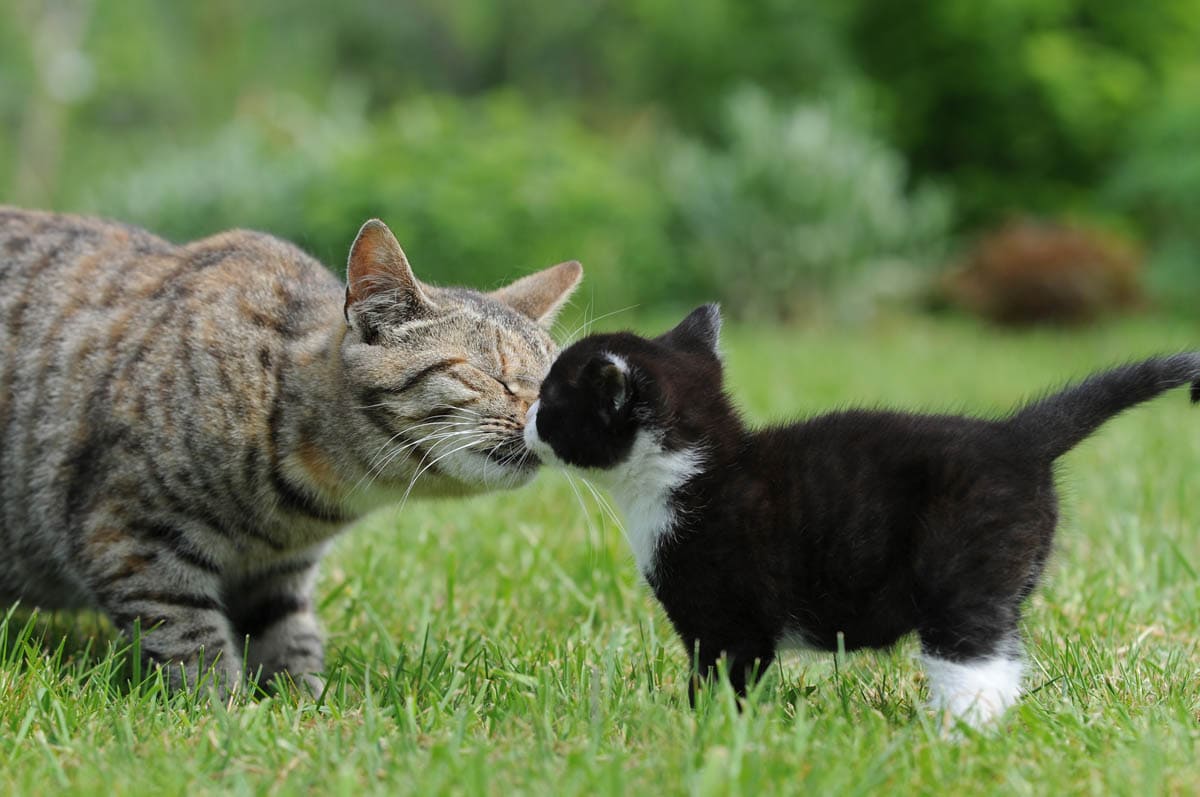
The basic wild-type tabby is a mackerel (Tm); however, two mutations have arisen, the dominant ticked tabby (Ta) and the recessive classic tabby (tb).
Basic cat genetics
Cats have 19 chromosomes which come in pairs, one from the mother and one from the father. 18 of the chromosomes are autosomes, and one pair is the sex chromosomes X and Y. All of the female cat’s eggs are X, whereas the male sperm can be X or Y. If an X sperm fertilises the egg, the offspring will be female (XX), if a Y sperm fertilises the egg, the offspring will be male (XY).
Genes are contained within the chromosome which is made up of a double-strand helix containing DNA. DNA contains the instructions necessary for the cat to develop, survive and reproduce. For this to occur, the DNA has to be converted into messages which can be used to produce proteins, which are complex molecules that do most of the work within the cat’s body.
A locus (plural loci) is the specific, fixed position on a chromosome where a particular gene or genetic marker is located.
Alleles are variants of the same gene, for example, B (black), b (chocolate) and b1 (cinnamon).
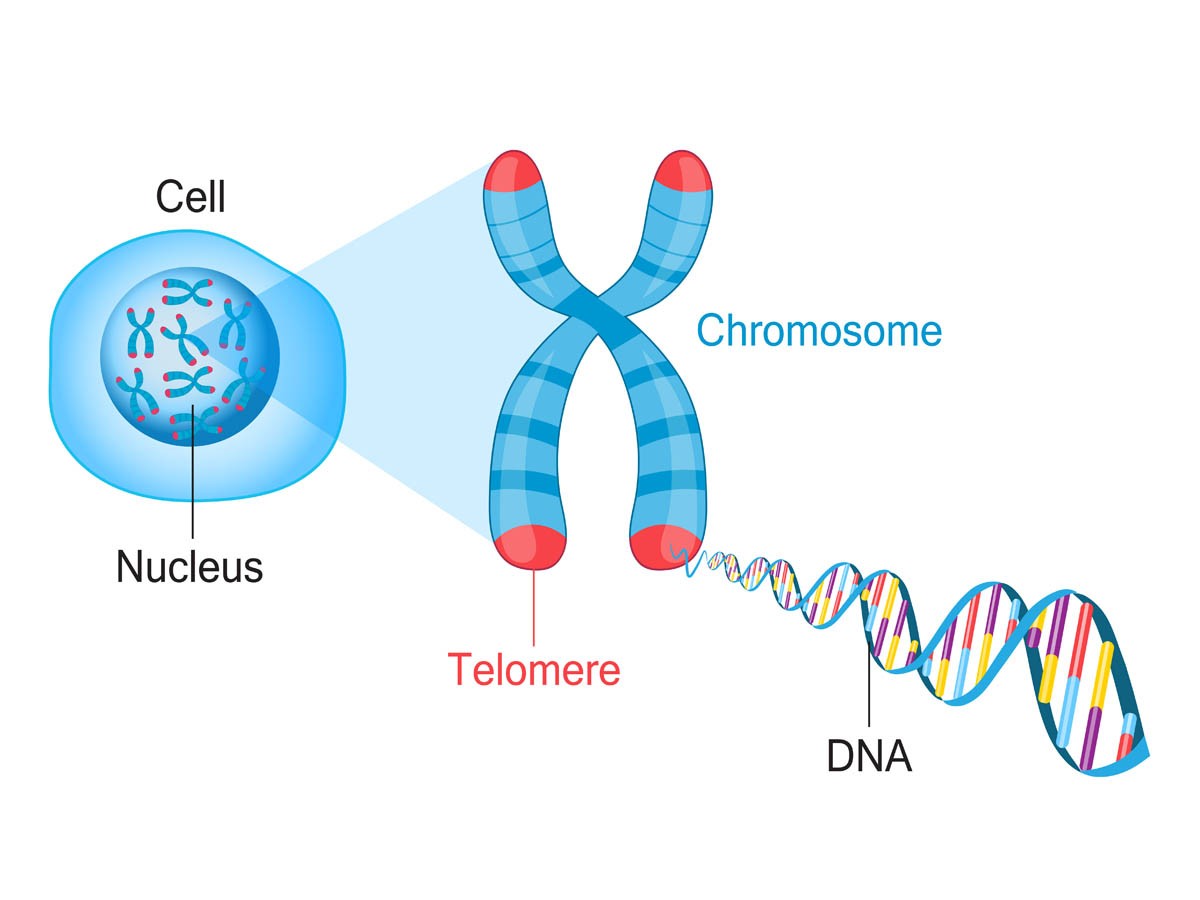
Tabby coat colours
The tabby coat occurs in many colours, primarily silver, brown and red (ginger/yellow). But a dilution can change those primary colours into lighter forms.
Melanocytes are cells responsible for producing melanin, which are microscopic granules occurring in the hair, skin, and iris of the eyes. The size, shape and arrangement of melanin granules are responsible for the colour of the cat’s coat. Cats have two types of melanin, black-based eumelanin and orange-based pheomelanin. Eumelanin is spherical and absorbs almost all light, which gives black pigmentation, pheomelanin granules are elongated and produce the red coat colour.
The black gene has three alleles that control the density of eumelanin in the hair shaft.
- B produces black fur and is dominant
- b reduces melanin density to a chocolate colour
- b1 which further reduces melanin density to a medium brown (cinnamon)
Red based colours have two alleles that are located on the X chromosome.
- O produces red fur
- o (non-orange) produces black fur
Dilution
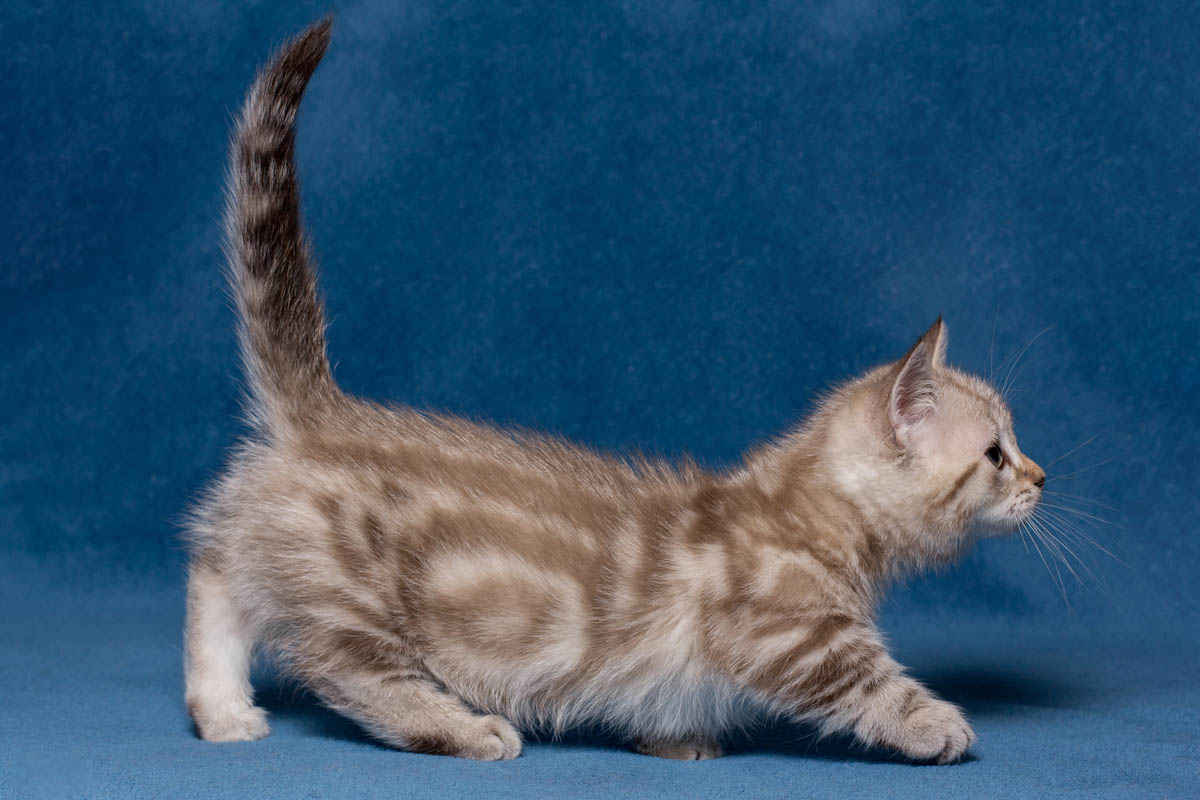
Dilute classic tabby munchkin cat
Dilute coat colours are a recessive trait that dilutes coat colours by causing uneven distribution of pigment in the hair shaft
- Black dilutes to blue (grey)
- Chocolate dilutes to lilac
- Cinnamon dilutes to fawn
- Orange dilutes to cream
Dilute modifier (DM)
A secondary type of dilution known as dilute modifier can also occur, which causes the coat to take on a brownish cast. The dilute modifier only affects dilute colours and does not affect dense colours.
- Blue becomes caramel
- Chocolate becomes taupe
- Cream becomes apricot
White spotting gene

Some tabby coats have some white fur, usually on the paws, belly, chest, throat and sometimes face. This white fur is caused by the white spotting gene (Ws). Genetically, the cat is tabby, but the white spotting gene masks the colouration on certain parts of the body.
Tabby cat patterns
Mackerel tabby
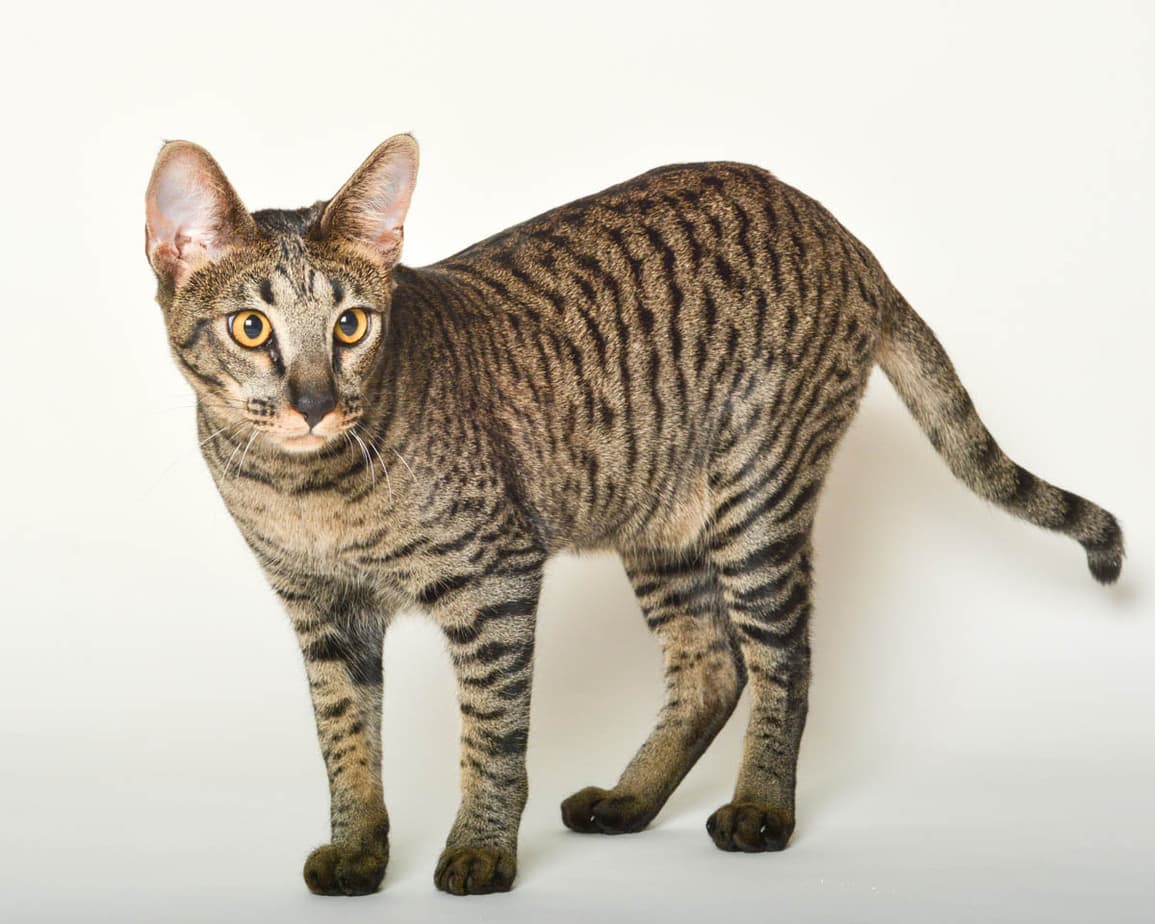
Also known as striped, the mackerel tabby pattern is the dominant wild-type which consists of well-defined, evenly spaced thin vertical stripes on the sides of the body which extend from the shoulder to the tail, rings around the legs and tail and pale ground colour.
Spotted tabby
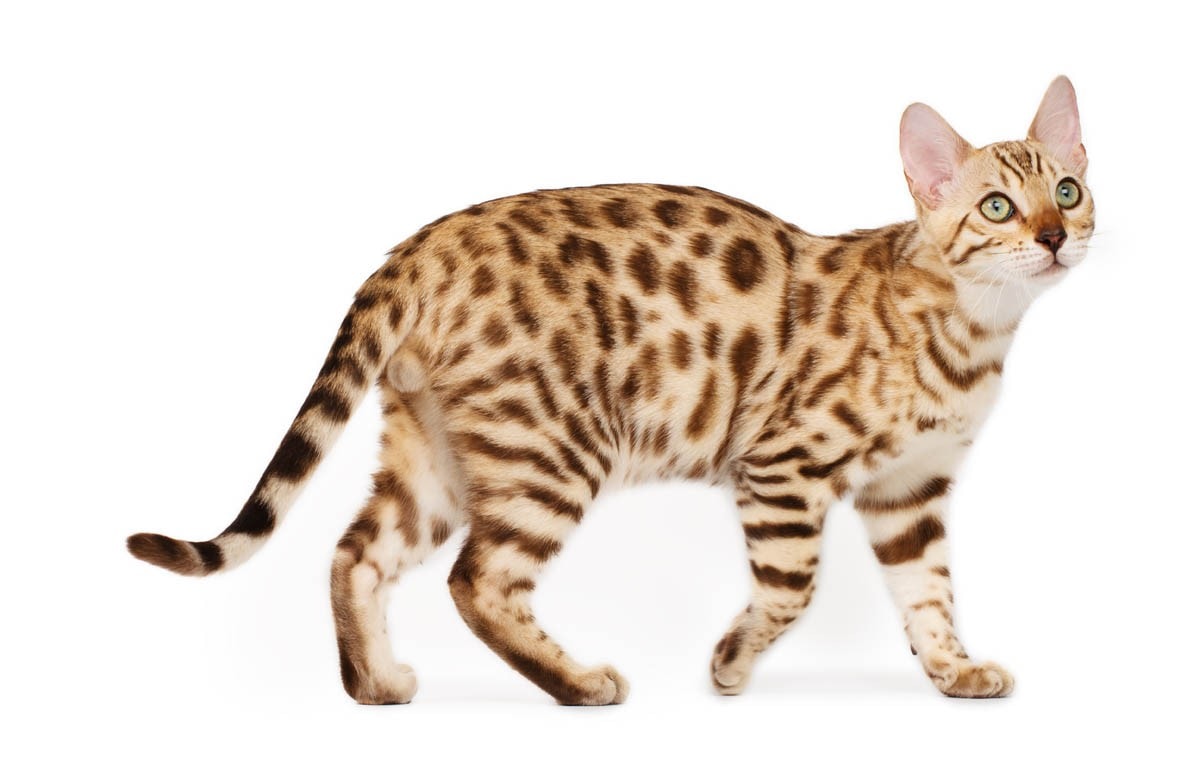
The spotted tabby is a variant of the mackerel tabby however a modifier gene breaks the characteristic mackerel stripes up into spots. This combination of spots on a pale background makes the cat look like a miniature leopard.
Classic tabby

Also known as blotched tabby, the classic tabby pattern consists of dark whorls on a lighter background. The ideal classic tabby will have a bullseye or oyster mark on each flank.
When viewed from above, the shoulders have the appearance of a butterfly, and the classic pattern is sometimes referred to as a butterfly tabby.

Ticked tabby
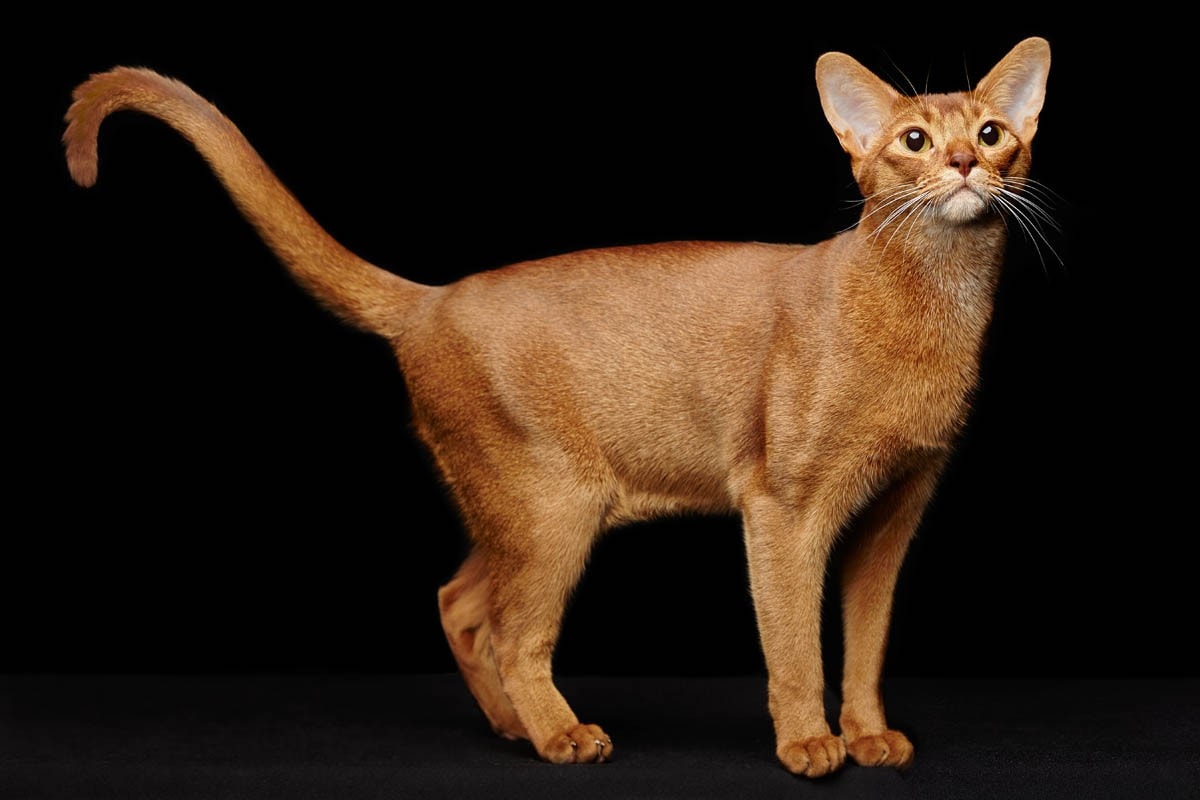
Also known as Abyssinian tabby or agouti tabby, the ticked tabby cats have a gene that hides the tabby striping, leaving only the underlying agouti colouration. Each hair has bands of colour along the hair shaft. There is little to no striping on the body, but some faint fine barring may be present on the face, legs and tail, this may be more apparent if the cat is heterozygous, meaning its genetic makeup is Ta/Tm or Ta/tb
Tabby cat combinations
In addition to the four types of tabby patterns, tabby can also occur in several different combinations.
Patched tabby

Also known as torbie, a patched tabby is a cat with random patches of red or cream and a darker colour (black, blue or brown) and are almost exclusively female. Patched tabbies can show the mackerel, classic or spotted tabby pattern.
Caliby

The caliby is similar to the patched tabby with the addition of areas of white and is again almost exclusively found in female cats.
Lynx point

Also known as a tabby point, lynx points have tabby markings on the face, legs and tail which contrasts with the pointed colouration of the Siamese, Birman or Ragdoll cat.
Tabby M on the forehead

All tabby cats, regardless of pattern or colour, have a characteristic M on their forehead and most will have additional lines around the eyes. The ticked Singapura has cheetah lines, which extend down the face from the inner corner of the eyes.
What cat breeds can be tabby?
- Abyssinian
- American bobtail
- American curl
- American shorthair
- American wirehair
- Australian mist
- Bengal
- Birman (lynx point)
- British shorthair
- Colourpoint shorthair (lynx point)
- Cornish Rex
- Devon Rex
- Egyptian Mau
- Exotic
- Maine coon
- Munchkin
- Ocicat
- Oriental
- Persian
- Scottish fold
- Scottish shorthair
- Siamese (lynx point)
- Singapura
- Somali
- Toyger
Frequently asked questions
Do tabby cats have striped skin?
Tabby cats do not have striped skin, interestingly, tigers do.
Are tabby cats a breed?
Tabby is a pattern and not a breed of cat.
Is the tabby gene dominant?
The tabby pattern is dominant over solid.
Are tabby cats male or female?
The tabby pattern can be found on both male and female cats, however, the ratio of ginger males to females is 3 -1. That is because the female must inherit the red gene from both mother and father for her to be ginger, if she inherits one red gene and one black gene (or brown), she will be tortoiseshell. Some females also carry the white spotting gene, which will make her a calico or a torbie. Tortoiseshell and calico cats have a solid colour (usually black), intermingled with red, others show both brown tabby and red tabby.
Why does the female have two tabby colours but not the male?
The female inherits a copy of the red gene located on the X chromosome from one parent and a non-red gene from the other parent. X-inactivation or lyonization occurs during early development (around the eight-cell stage, but it can occur later) to prevent the expression of both X chromosomes. Every cell in the female has one active and one silenced X chromosome (known as a Barr body), and as the cells continue to divide, they will take the colour from those eight progenitor cells. The earlier the inactivation, the larger the patch of fur derived from each lyonized progenitor cell.
